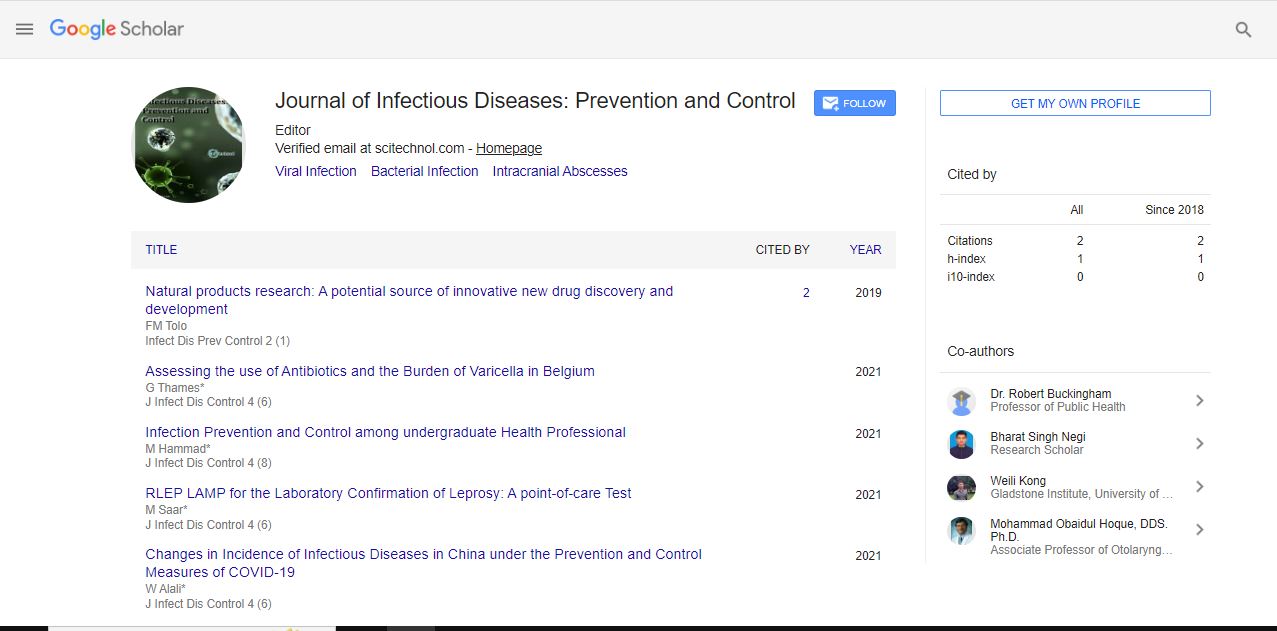Opinion Article, Infect Dis Prev Control Vol: 6 Issue: 4
Visible Dynamics of Human Physiology Disclosed through Adaptive Resilience
Jennard Pomeroy*
1Department of Public Health, Aarhus University, Aarhus, Denmark
*Corresponding Author: Jennard Pomeroy,
Department of Public Health, Aarhus
University, Aarhus, Denmark
E-mail: jennpomer@envs.au.dk
Received date: 24 November, 2023, Manuscript No. IDPC-24-127266;
Editor assigned date: 27 November, 2023, Pre QC No. IDPC-24-127266 (PQ);
Reviewed date: 11 December, 2023, QC No. IDPC-24-127266;
Revised date: 18 December, 2023, Manuscript No. IDPC-24-127266 (R);
Published date: 26 December, 2023, DOI: 10.36648/idpc.6.4.154
Citation: Pomeroy J (2023) Visible Dynamics of Human Physiology Disclosed through Adaptive Resilience. Infect Dis Prev Control 6:4.
Description
Human physiology, a composition of dynamic processes, constantly adapts to internal and external stimuli to maintain homeostasis. This exploration delves into the complex world of adaptive physiological processes within the human body, emphasizing the role of visualization in revealing the dynamic interaction that governs the existence. At the core of human physiology is the concept of homeostasis, the body's ability to maintain a stable internal environment despite external fluctuations. Adaptive physiological processes play a pivotal role in achieving and sustaining homeostasis, ensuring that vital parameters such as temperature, Potential of Hydrogen (pH) and nutrient levels remain within optimal ranges for cellular function.
Visualizing these adaptive processes provides a tangible understanding of how the body responds to challenges and orchestrates complex adjustments to maintain equilibrium. From temperature regulation to fluid balance, the visual representation of adaptive responses provides inputs into the sophistication of human physiology. Visualizing the adaptive processes involved in thermoregulation reveals the complexity of the body's response to temperature changes. When exposed to heat, blood vessels near the skin surface dilate, facilitating heat dissipation through perspiration. Conversely, in cold conditions, vasoconstriction conserves heat and shivering generates additional warmth.
Thermographic imaging and visual representations of blood flow patterns enable people to witness these dynamic processes in action. Such visualization tools enhance the comprehension of the body's ability to adapt to diverse thermal environments, ensuring that the core temperature remains within a narrow range conducive to cellular function. Visualizing osmoregulation, the body's regulation of water and electrolyte balance, demonstrates the skillful equilibrium between ingestion and suppression. Through graphical representations, one can observe how the kidneys adjust urine concentration in response to varying hydration states. Hormonal signals, such as Antidiuretic Hormone (ADH) and aldosterone, play vital roles in these adaptive processes.
Understanding fluid balance through visual aids provides a window into the complex mechanisms that prevent dehydration or overhydration. Visualization tools, including flowcharts and diagrams, help convey the dynamic adjustments made by the body to maintain the delicate equilibrium required for cellular function. The respiratory system highlights remarkable adaptive processes in response to changing oxygen demands. Visualization of respiratory adaptations, such as bronchodilation and constriction, provides inputs into the body's ability to optimize gas exchange. Animated models of alveolar ventilation and perfusion illustrate how the lungs dynamically adjust to varying metabolic needs.
Graphical representations of the Electrocardiogram (ECG) capture the electrical events orchestrating each heartbeat, providing a visual narrative of the heart's adaptability. Visualization aids not only in understanding the adaptive responses of the cardiovascular system but also in diagnosing abnormalities through pattern recognition. Visualization tools, such as metabolic pathway diagrams and 3D animations, enhance comprehension of how the body adjusts its metabolic machinery in response to fasting, feeding or physical activity. This visual exploration aids in appreciating the complexity of hormones like insulin and glucagon in regulating blood glucose levels. The nervous system orchestrates adaptive responses through complex neurological processes.
Conclusion
Visualizing these adaptations, such as synaptic transmission, neural plasticity and reflex arcs, reveals the dynamic nature of neural communication. Functional Magnetic Resonance Imaging (fMRI) and neural network diagrams provide a visual exploration into how the brain processes information and adapts to changing stimuli. In the context of pathophysiology, visual aids aid in recognizing deviations from normal adaptive patterns, facilitating diagnostics and treatment planning. Visualizing adaptive human physiological processes provides a captivating exploration into the dynamic nature of the body's responses to internal and external challenges.
 Spanish
Spanish  Chinese
Chinese  Russian
Russian  German
German  French
French  Japanese
Japanese  Portuguese
Portuguese  Hindi
Hindi 